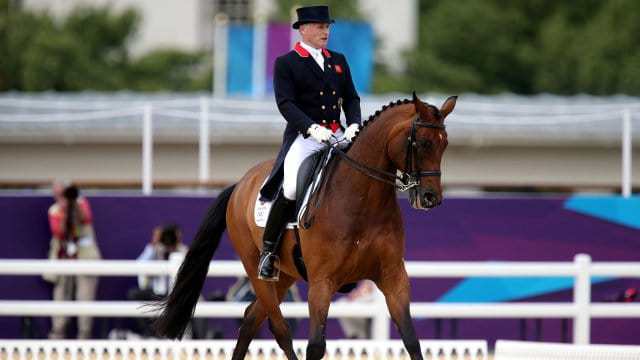Richard Davison explains how to achieve effective leg aids

There is a lot of talk of pressure and release when applying effective leg aids, but how do you know how much pressure to apply?
In a Masterclass on H&C, Olympic dressage rider Richard Davison explains the scales of pressure with help from his son Joe, an international showjumper. It was fascinating to watch father and son together – and made us realise the importance of getting the dressage basics right when jumping.
Here is Richard’s guide to applying the pressure right, according to your horse’s response.
Sensitive to signals
We all need responsive horses: the question is, how to do we train our horses to become sensitive to our signals? One part of the jigsaw is the rider’s legs.
When teaching a horse how to respond to our leg pressure we use a series of graduated pressures, with a one-second gap in between. As soon as the horse chooses the desired action we stop applying the pressure.
Scales of pressure
We grade the pressure on a scale of one to five.
- The lightest touch – the equivalent of a fly landing on your horse’s side. We know a horse can feel that lightness as they twitch when a fly lands on them.
- This must have more impact than number one – it is a light tap.
- Again you are increasing the impact of number two – think of nudging your horse.
- By number four you are applying a stronger aid, to get his attention.
- This is quite a sharp, impactful stimulus.
To be able to control your leg aids and apply varying degrees of pressure you need to develop an independent seat and upper body control. If your body is unsteady in the saddle, your legs will be too.
You can also use this exercise for rein pressure, for example if you’re asking for neck bend you should grade the vibration needed.
Dressage between jumps
This exercise isn’t just for working on the flat – it can also be used when jumping. Most people focus on the jump itself, but your horse’s rideablity in between the fences could be the reason he has a fence down.
When lengthening or shortening his stride you need to select the right amount of pressure and look for the right response. It’s simply dressage between the jumps.
For more great advice from Richard and Joe Davison, don’t miss their Masterclass which you can watch NOW on H&C Play or Amazon Video.






